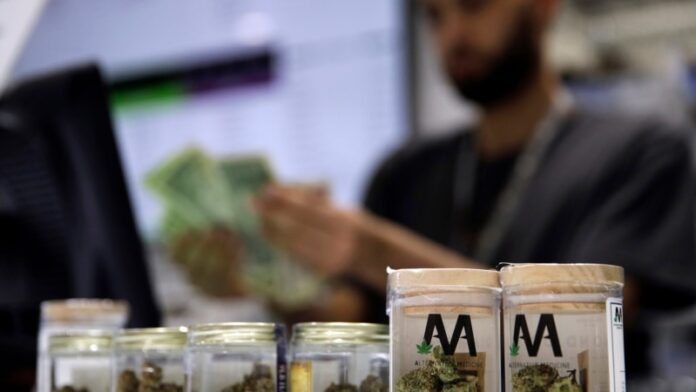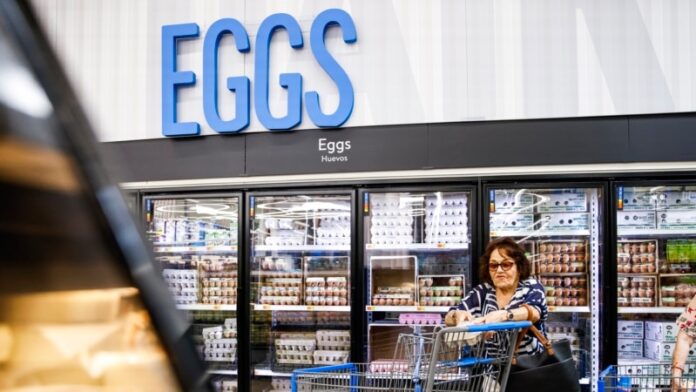Some things we brush off as normal might actually be signs that something is not right in the relationship. It’s easy to miss these red flags when you’re in the middle of it. However, knowing what to look for can help you decide if it’s time to take action…
Read More
5 Tell-Tale Signs That Your Relationship Is Actually Toxic
Hipgnosis Paid $7.5 Million for Barry Manilow’s Catalog — Plus Other Interesting Facts About the Soured Song-Rights Deal
How much did Barry Manilow sell his music catalog for? Four years after Hipgnosis Songs Fund announced the purchase, a new lawsuit has revealed interesting details including the deal’s size. Barry Manilow just recently submitted that lawsuit, we reported yesterday, after Hipgnosis in early August reportedly levied a complaint of its own across the pond…
Read More
David Gilmour Says He’s Still Interested in Selling the Pink Floyd Catalog — But There’s the Matter with Roger Waters
David Gilmour says he’s still interested in selling Pink Floyd’s catalog to get out of the ‘mud bath’ that is his contentious relationship with former bandmate Roger Waters. Pink Floyd’s David Gilmour says he’s actively interested in selling the band’s catalog — but not because of the sweet payday such a deal would bring him…
Read More
DMN Pro’s New Music Release Tracker Has An Interesting New Entry From The Weeknd
The Weeknd is taking a break from his break with a new album called Hurry Up Tomorrow. Abel Tesfaye unveiled the title of the new album on social media earlier today. Tesfaye says the album is the final project of his trilogy that began with After Hours in 2020…
Read More
Lollapalooza Chile, Argentina, and Brazil 2025 Lineups Revealed — Justin Timberlake, Tool, Olivia Rodrigo, Alanis Morissette
Lollapalooza Argentina, Brazil, and Chile have announced their 2025 lineups, with Olivia Rodrigo, Justin Timberlake, Alanis Morissette, and Tool. Lollapalooza has tapped the likes of Olivia Rodrigo, Justin Timberlake, Alanis Morissette, Shawn Mendes, Tool, and Rüfüs Du Sol for the 2025 editions of Lollapalooza Chile, Argentina…
Read More
Stranger who offered to pay for sewing classes saved his life


Embed
Stranger who offered to pay for sewing classes saved his life
Embed
The code has been copied to your clipboard.
px
px
The URL has been copied to your clipboard
No media source currently available
0:00
0:02:53
0:00
Download
-
240p | 8.2MB
-
360p | 12.6MB
-
480p | 21.0MB
-
720p | 43.1MB
-
1080p | 62.1MB
New York is one of the fashion capitals of the world, but the industry has made fewer strides in advancing and promoting minorities. In the uptown neighborhood of Harlem, a program is tapping into community talent, led by a local who almost missed out on the industry entirely. Tina Trinh reports. Videographer: Ting-Yi Hsu
New York mayor calls for changes in city’s migrant sanctuary status


Embed
New York mayor calls for changes in city’s migrant sanctuary status
Embed
The code has been copied to your clipboard.
px
px
The URL has been copied to your clipboard
No media source currently available
0:00
0:03:26
0:00
Download
-
240p | 9.7MB
-
360p | 15.7MB
-
480p | 28.3MB
-
720p | 51.7MB
-
1080p | 79.0MB
Migrant-related crime in New York has many residents on edge, with some blaming the influx of undocumented migrants into the city over the past two years. Aron Ranen and Igor Tsikhanenka spoke to law enforcement officials, politicians, activists and migrants about the controversy in this story narrated by Aron Ranen.
Decision on major policy shift on marijuana won’t come until after US presidential election
Washington —
A decision on whether to reclassify marijuana as a less dangerous drug in the U.S. won’t come until after the November presidential election, a timeline that raises the chances it could be a potent political issue in the closely contested race.
The U.S. Drug Enforcement Administration last week set a hearing date to take comment on the proposed historic change in federal drug policy for Dec. 2.
The hearing date means a final decision could well come in the next administration. While it’s possible it could precede the end of President Joe Biden’s term, issuing it before Inauguration Day “would be pretty expedited,” said cannabis lawyer Brian Vicente.
That could put a new spotlight on the presidential candidates’ positions on marijuana. Vice President Kamala Harris has backed decriminalizing the drug and said it’s “absurd” to have it in the DEA’s Schedule I category alongside heroin and LSD. The Democratic nominee’s position has shifted over the years; she once oversaw the enforcement of cannabis laws and opposed legalized recreational use for adults in California while running for attorney general in 2010.
Former President Donald Trump, the Republican nominee, signaled support for a Florida legalization measure on Saturday, following earlier comments that he increasingly agrees that people shouldn’t be jailed for the drug now legal in multiple states, “whether that’s a good thing or a bad thing.”
During his run for president in 2016, Trump said that he backed medical marijuana and that pot should be left up to the states. But during his first term, then-Attorney General Jeff Sessions lifted an Obama-era policy that kept federal authorities from cracking down on the pot trade in states where the drug is legal.
Trump’s campaign didn’t immediately respond to a query about his position on rescheduling the drug.
The Justice Department proposed reclassifying it in May, saying the change would recognize marijuana’s medical uses and acknowledge it has less potential for abuse than some of the nation’s most dangerous drugs. The proposal, which would not legalize marijuana for recreational use, came after a call for review from Biden, who has called the change “monumental.”
The DEA has said it doesn’t yet have a position on whether to go through with the change, stating in a memo that it would keep weighing the issue as the federal rulemaking process plays out.
The new classification would be the most significant shift in U.S. drug policy in 50 years and could be a potent political issue, especially with younger voters. But it faces opposition from groups such as Smart Approaches to Marijuana.
Its president, Kevin Sabet, argues there isn’t enough data to move cannabis to the less-dangerous Schedule III category, alongside ketamine and some anabolic steroids. The DEA’s move to hold the hearing is “a huge win in our fight to have this decision guided by medical science, not politics,” he said in a statement, adding that 18 states’ attorneys general are backing his opposition.
The hearing sparked some consternation among pot industry players, though little surprise about the DEA decision to hold one.
“While the result ultimately may be better, I think we’re so used to seeing delays that it’s just a little disappointing,” said Stephen Abraham, chief financial officer at The Blinc Group, supplier of cartridges and other hardware used in pot vapes. “Every time you slow down or hold resources from the legal market, it’s to the benefit of the illicit market.”
The proposal, which was signed by Attorney General Merrick Garland rather than DEA Administrator Anne Milgram, followed a recommendation from the U.S. Department of Health and Human Services.
Federal drug policy has lagged behind that of many states in recent years, with 38 having already legalized medical marijuana and 24 legalizing its recreational use.
Lawmakers from both major political parties have pushed for the change as marijuana has become increasingly decriminalized and accepted. A Gallup poll last year found 70% of adults support legalization, the highest level yet recorded by the polling firm and more than double the roughly three in 10 who backed it in 2000.
The marijuana industry has also grown quickly, and state-licensed pot companies are keen on rescheduling partly because it could enable them to take federal business-expense tax deductions that aren’t available to enterprises involved in “trafficking” any Schedule I or II drug. For some of Vicente’s clients, the change would effectively reduce the tax rate from 75% to 25%.
Some legalization advocates also hope rescheduling could help persuade Congress to pass legislation aimed at opening banks’ doors to cannabis companies. Currently, the drug’s legal status means many federally regulated banks are reluctant to lend to such businesses, or sometimes even provide checking or other basic services.
Rescheduling could also make it easier to research marijuana, since it’s difficult to conduct authorized clinical studies on Schedule I substances. Some medical marijuana patient advocates fear that the discussion has already become deeply politicized and that the focus on rescheduling’s potential effect on the industry has shifted attention from the people who could benefit.
“It was our hope that we could finally take the next step and create the national medical cannabis program that we need,” said Steph Sherer, founder and president of Americans for Safe Access. The organization advocates for putting cannabis in a drug category all its own and for creating a medical cannabis office within DHS.
The immediate effect of rescheduling on the nation’s criminal justice system, though, would likely be more muted, since federal prosecutions for simple possession have been fairly rare in recent years.
Party of one: US restaurants cater to growing number of solo diners
NEW YORK —
Parisa Imanirad, a scientist and cancer researcher from San Francisco, is married and has a wide circle of friends. But once or twice a week, she goes to a restaurant by herself.
Imanirad said dining alone gives her time to think or read. She tries not to touch her phone and relishes the silence. “It’s like a spa, but a different type,” Imanirad said during a recent solo lunch at Spruce, an upscale restaurant in San Francisco.
Imanirad isn’t alone in her desire to be alone. In the United States, solo dining reservations have risen 29% over the last two years, according to OpenTable, the restaurant reservation site. They’re up 18% this year in Germany and 14% in the United Kingdom.
Japan even has a special term for solo dining: “ohitorisama,” which means “alone” but with honorifics spoken before and after the word to make parties of one feel less hesitant. In a recent survey, Japan’s Hot Pepper Gourmet Eating Out Research Institute found that 23% of Japanese people eat out alone, up from 18% in 2018.
As a result, many restaurants in Japan and elsewhere are redoing their seating, changing their menus and adding other special touches to appeal to solo diners.
“Even so-called family restaurants are increasing counter seats for solitary diners, and restaurants are offering courses with smaller servings so a person eating alone gets a variety of dishes,” said Masahiro Inagaki, a senior researcher at the institute.
OpenTable CEO Debby Soo thinks remote work is one reason for the increase, with diners seeking respites from their home offices. But she thinks there are deeper reasons, too.
“I think there’s a broader movement of self-love and self-care and really … enjoying your own company,” Soo said.
The pandemic also made social interactions less feasible and therefore less important while eating out, said Anna Mattila, a professor of lodging management at Penn State University who has studied solo dining. And smartphones help some restaurant patrons feel connected to others even when they’re by themselves, she said.
“The social norms have changed. People don’t look at solo diners anymore and think, ‘You must be a loner,’” Mattila said.
More people live and travel solo
The growth comes as more people are living alone. In 2019, the Pew Research Center found that 38% of U.S. adults ages 25 to 54 were living without a partner, up from 29% in 1990. In Japan, single households now make up one-third of the total; that’s expected to climb to 40% by 2040, according to government data.
Increasing interest in solo travel — particularly among travelers ages 55 and over — is also leading to more meals alone.
On a recent solo trip to Lucerne, Switzerland, Carolyn Ray was stunned when the hostess led her to a beautiful lake-view table set for one, complete with a small vase of flowers. Ray, the CEO and editor of JourneyWoman, a website for solo women travelers over 50, said other restaurants have tried to seat her toward the back or pointedly asked if someone will be joining her.
Ray counsels women planning to dine alone to go somewhere else if they’re treated rudely or given a bad table.
“It’s almost like the world hasn’t caught up with this idea that we are on our own because we want to be on our own and we’re independent and empowered,” she said. “We can go into any restaurant we want and have a table for one and feel good about it.”
Shawn Singh, a Houston-based content creator and restaurant reviewer, said he eats alone about 70% of the time. If the idea of venturing out for a solitary meal is intimidating, he suggests going to lunch instead of dinner — when tables are usually more crowded with groups — or going early on a weekday.
“The best way to see a restaurant you’ve been wanting to see for a long time is definitely going solo,” Singh said. “If I go at 5 p.m. and alone, I haven’t been denied at one place ever.”
Restaurants aren’t always thrilled to seat a single diner at a table that could fit more. A Michelin-starred London restaurant, Alex Dilling at Hotel Cafe Royal, caused a stir last year when it started charging solo patrons the same price as two customers. Its eight-course dinner tasting menu, which includes caviar and Cornish squid, costs 215 pounds ($280) per person.
The restaurant, which has only 34 seats, didn’t respond to a request for comment. But its website doesn’t allow reservations for fewer than two people.
‘Playing the long game’
Other restaurants say it’s worth seating one person at a table made for two because solo diners tend to be loyal, repeat customers.
“While there may be a short-term loss there, I think we’re kind of playing the long game and establishing ourselves as a place that’s truly special,” said Drew Brady, chief operating officer at Overthrow Hospitality, which operates 11 vegan restaurants in New York.
Brady has seen an increase in solo diners since the pandemic, and says they’re evenly split between men and women. At the company’s flagship restaurant, Avant Garden, they make up as much as 8% of patrons.
In response, the restaurant teamed up with Lightspeed, a restaurant tech and consulting company, to develop a solo dining program. Avant Garden now has a spacious table designed for solo diners, with a $65 four-course menu fashioned like a passport to enhance the sense of adventure. If solo diners order a cocktail, a bartender mixes it tableside.
Mattila, at Penn State, said restaurants might want to consider additional changes. Her research has found that solo diners prefer angular shapes — in lights, tables or plates, for example — to round ones, which are more associated with the connectedness of groups. They also prefer slow-tempo music.
Jill Weber, the founder of Sojourn Philly, a Philadelphia company that owns two restaurants and a wine bar, said she adds a communal table at special events such as wine tastings so individuals have a place to gather. She also doesn’t offer specials designed for two.
Weber, who is also an archaeologist, loves dining alone when she’s traveling.
“There’s something about not having to agree on where to go and everything that goes with that. You have the freedom to stay as long as you want, order what you want and sit with those things,” she said. “It also feels brave sometimes.”
US Fed welcomes ‘soft landing’ even if many Americans don’t feel like cheering
Washington —
When Jerome Powell delivered a high-profile speech last month, the Federal Reserve chair came the closest he ever had to declaring that the inflation surge that gripped the nation for three painful years was now essentially defeated.
And not only that. The Fed’s high interest rates, Powell said, had managed to achieve that goal without causing a widely predicted recession and high unemployment.
Yet most Americans are not in the same celebratory mood about the plummeting of inflation in the face of the high borrowing rates the Fed engineered. Though consumer sentiment is slowly rising, a majority of Americans in some surveys still complain about elevated prices, given that the costs of such necessities as food, gas and housing remain far above where they were before the pandemic erupted in 2020.
The relatively sour mood of the public is creating challenges for Vice President Kamala Harris as she seeks to succeed President Joe Biden. Despite the fall of inflation and strong job growth, many voters say they’re dissatisfied with the Biden-Harris administration’s economic record — and especially frustrated by high prices.
That disparity points to a striking gap between how economists and policymakers assess the past several years of the economy and how many ordinary Americans do.
In his remarks last month, given at an annual economic symposium in Jackson Hole, Wyoming, Powell underscored how the Fed’s sharp rate hikes succeeded much more than most economists had predicted in taming inflation without hammering the economy — a notoriously difficult feat known as a “soft landing.”
“Some argued that getting inflation under control would require a recession and a lengthy period of high unemployment,” Powell said.
Ultimately, though, he noted, “the 4-1/2 percentage point decline in inflation from its peak two years ago has occurred in a context of low unemployment — a welcome and historically unusual result.”
With high inflation now essentially conquered, Powell and other central bank officials are preparing to cut their key interest rate in mid-September for the first time in more than four years. The Fed is becoming more focused on sustaining the job market with the help of lower interest rates than on continuing to fight inflation.
Many Americans ‘have taken a big hit’
Many consumers, by contrast, are still preoccupied most by today’s price levels.
“From the viewpoint of economists, central bankers, how we think about inflation, it really has been a remarkable success, how inflation went up, has come back, and is around the target,” said Kristin Forbes, an economist at MIT and a former official at the United Kingdom’s central bank, the Bank of England.
“But from the viewpoint of households, it has not been so successful,” she added. “Many have taken a big hit to their wages. Many of them feel like the basket of goods they buy is now much more expensive.”
Two years ago, economists feared that the Fed’s ongoing rate hikes — it ultimately raised its benchmark rate more than 5 percentage points to a 23-year high in the fastest pace in four decades — would hammer the economy and cause millions of job losses. After all, that’s what happened when the Fed under Chair Paul Volcker sent its benchmark rate to nearly 20% in the early 1980s, ultimately throttling a brutal inflationary spell.
In fact, at Jackson Hole two years ago, Powell himself warned that using high interest rates to defeat the inflation spike “would bring some pain to households and businesses.”
Yet now, according to the Fed’s preferred measure, inflation is 2.5%, not far above its 2% target. And while a weaker pace of hiring has caused some concerns, the unemployment rate is at a still-low 4.3%, and the economy expanded at a solid 3% annual rate last quarter.
While no Fed official will outright declare victory, some take satisfaction in defying the predictions of doom and gloom.
“2023 was a historic year for inflation falling,” said Austan Goolsbee, president of the Chicago Fed. “And there wasn’t a recession, and that’s unprecedented. And so we will be studying the mechanics of how that happened for a long time.”
Measures of consumer sentiment, though, indicate that three years of hurtful inflation have dimmed many Americans’ outlook. In addition, high loan rates, along with elevated housing prices, have led many young workers to fear that homeownership is increasingly out of reach.
‘Inflation overhang’
Last month, the consulting firm McKinsey said that 53% of consumers in its most recent survey “still say that rising prices and inflation are among their concerns.” McKinsey’s analysts attributed the escalated figure to “an ‘inflation overhang.” That’s the belief among analysts that it can take months, if not years, for consumers to adjust emotionally to a much higher level of prices even if their pay is keeping pace.
Economists point to several reasons for the wide gap in perceptions between economists and policymakers on the one hand and everyday consumers and workers on the other.
The first is that the Fed tailors its interest rate policies to manage inflation — the rate of price changes — rather than price levels themselves. So when inflation spikes, the central bank’s goal is to return it to a sustainable level, currently defined as 2%, rather than to reverse the price increases. The Fed’s policymakers expect average wages to catch up and eventually to allow consumers to afford the higher prices.
“Central bankers think even if inflation gets away from 2% for a period, as long as it comes back, that’s fine,” Forbes said. “Victory, mission accomplished. But the amount of time inflation is away from 2% can have a major cost.”
Research by Stefanie Stantcheva, a Harvard economist, and two colleagues found that most people’s views of inflation are very different from those of economists. Economists in general are more likely to regard inflation as a consequence of strong growth. They often describe inflation as a result of an “overheating” economy: Low unemployment, strong job growth and rising wages lead businesses to sharply increase prices without necessarily losing sales.
By contrast, a survey by Stantcheva found, ordinary Americans “view inflation as an unambiguously bad thing and very rarely as a sign of a good economy or as a byproduct of positive developments.”
Her survey respondents also said they believed that inflation stems from excessive government spending or greedy businesses. They “do not believe that (central bank) policymakers face trade-offs, such as having to reduce economic activity or increase unemployment to control inflation.”
Perceived recession
As a result, few consumers probably worried about the potential for a downturn as a result of the Fed’s rate hikes. One opinion survey, in fact, found that many consumers believed, incorrectly, that the economy was in a recession because inflation was so high.
At the Jackson Hole conference, Andrew Bailey, governor of the Bank of England, argued that central banks cannot guarantee that high inflation will never appear — only that they will try to drive it back down when it does.
“I get this question quite often in Parliament,” Bailey said. “People say, ‘Well you failed to control inflation.’ I said no.”
The test of a central bank, he continued, “is not that we will never have inflation. The test of the regime is how well, once you get hit by these shocks, you bring it back to target.”
Still, Forbes suggested that there are lessons to be learned from the post-COVID inflation spike, including whether inflation was allowed to stay too high for too long, both in the U.S. and the U.K. The Fed has long been criticized for having taken too long to start raising its benchmark rate. Inflation first spiked in the spring of 2021. Yet the Fed, under the mistaken impression that high inflation would prove “transitory,” didn’t begin raising rates until nearly a year later.
“Maybe should we rethink … where we seem to be now: ‘As long as it comes back four to five years later, that’s fine,’ ” she said. “Maybe four to five years is too long.
“How much unemployment or slowdown in growth should we be willing to accept to shorten the length of time that inflation is too high?”








